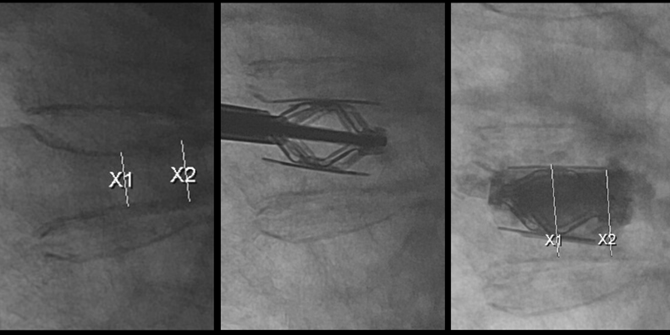Spinal Implant Procedure for Compression Fractures (Vertebral Implant)
What You Need to Know
- A spinal implant is a new type of spine cement augmentation procedure that is approved by the Food and Drug Administration for osteoporosis-related compression fractures in the spine.
- Spinal compression fractures cause back pain, height loss and abnormal curvature of the spine.
Why would you need a spinal implant?
VCFs occur when the vertebral body — the oval segment of the bone that forms the front of the vertebra — in the spine collapses. Often, VCFs are a result of osteoporosis, or they can happen after tumors develop in the spine (pathologic compression fractures). Spinal implant procedures treat VCFs.
Osteoporosis can cause the bones of the spine to become thin and weak. The bones then easily compress and break, resulting in spinal collapse and loss of height. If this happens in multiple levels in the spine, pronounced spinal curvature may develop. VCFs can occur from simple daily activities and can cause significant pain and mobility impairment.
About the Spinal Implant Procedure
A spinal implant is an outpatient procedure that is performed by a spine neuro-interventional radiologist. Interventional neuroradiologists are radiologists who specialize in the diagnosis and treatment of abnormalities of the brain, spine, and head and neck.
During a spinal implant procedure, a very small titanium device that looks like the jack for a car is inserted into the spine. The implant is expanded within the collapsed vertebra to gain back the lost height, and it can almost restore the height of the compressed vertebra back to prefracture levels. The implant also helps correct alignment of the spine. Once the implant is placed correctly, special medical bone cement is added, which holds the implant and the fracture repair in place.
A spinal implant procedure can restore a patient’s vertebral height and significantly reduce the pain associated with acutely or subacutely compressed vertebrae. Height restoration achieved with this procedure also reduces the incidence of future adjacent-level spinal fractures (fractures that occur next to the primary fracture).
Patients should be able to resume normal activities 72 hours after the procedure.

Image above (left to right) During procedure; before implant, with implant deployed; after with implant/Cement.
Johns Hopkins Interventional Neuroradiology
The spinal implant procedure is offered by interventional neuroradiologist Majid Khan and his team, who were some of the first in the U.S. to perform this procedure. We use high-precision diagnostic techniques to identify the location and degree of spinal fractures. Our goal is to help patients decrease pain and return to previous activity levels as much as possible.
What to Expect Before, During and After a Spinal Implant Procedure
Before the procedure:
- Your doctor will likely order an X-ray, take a complete medical history, and do a physical exam to determine the precise location and nature of your vertebra-related pain. The doctor might also use magnetic resonance imaging (MRI) or a computed tomography scan (CT or CAT scan).
- Tell your doctor about all prescription and over-the-counter medications and any herbal supplements you are taking.
- Tell your doctor if you have a history of bleeding disorders or if you are taking any anticoagulant (blood-thinning) medications, aspirin or other medications that affect blood clotting.
During the procedure, your neuroradiologist:
- Gives you sedation medication or general anesthesia, depending on the pain and your ability to lie still during the procedure
- Uses a continuous X-ray to guide the needle into the fractured vertebra, with your body protected from the radiation
- Slowly introduces the spinal implants into your fractured vertebral body via two small 1 centimeter skin incisions and then injects cement into the vertebra under X-ray guidance
After the procedure:
- You will lie on your back for a short amount of time while the cement hardens.
- You will remain in an observation room for an additional three to four hours for monitoring.
- You may experience pain relief almost immediately after the procedure, or it may take up to 72 hours. Your doctor can provide pain relief medications for the temporary discomfort.
- Your doctor will assess your pain and check for any possible complications before you are discharged to go home.
- You may need to continue wearing a back brace, but it’s usually not necessary.
- You will come back for a follow-up appointment and imaging in three to four weeks.
Spinal Implant Procedure Risks
There is very low risk involved in a spinal implant procedure, but complications that can happen include:
- Infection
- Bleeding
- Increased back pain
- Tingling, numbness or weakness because of nerve damage (rare)
- Cement leaking out of position during the procedure (rare)
You may face other risks, depending on your specific medical condition. Make sure to discuss any concerns with your doctor before the procedure






